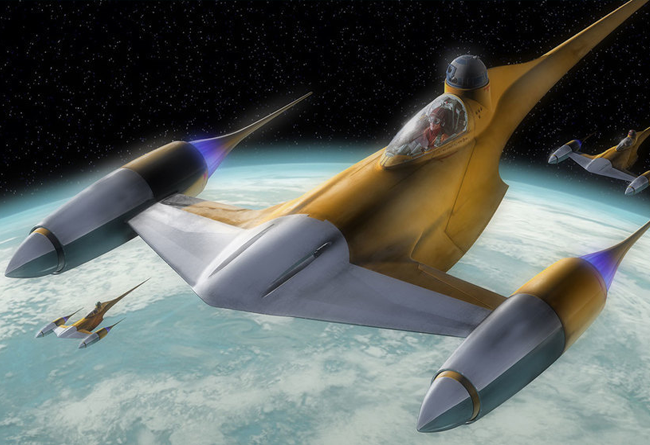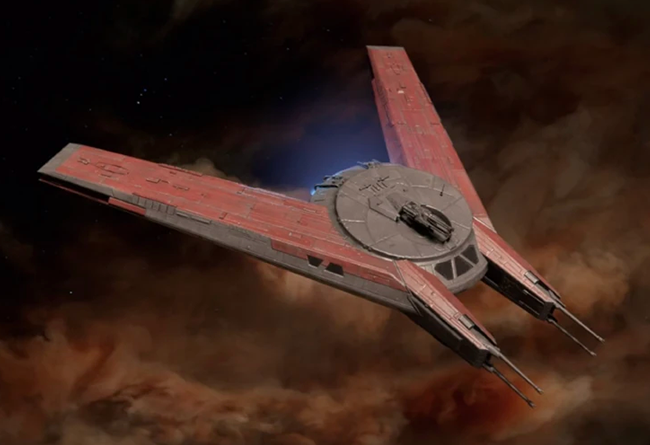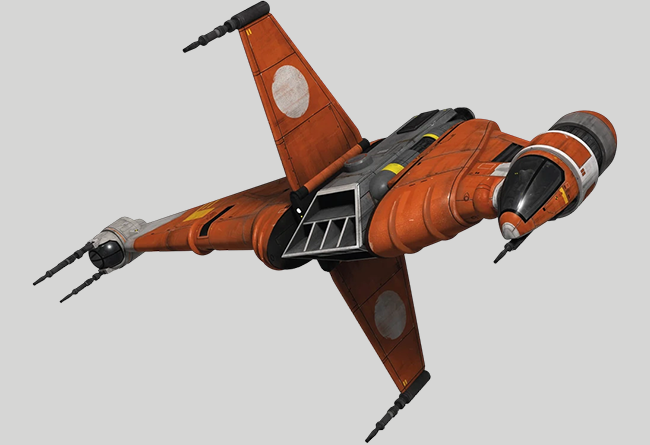Craft: Theed Palace Space Vessel Engineering Corps N-1 Royal Starfighter
Type: Space superiority starfighter
Scale: Starfighter
Length: 11 meters
Skill: Starfighter piloting: N-1
Crew: 1 (plus astromech droid)
Crew Skill: Starfighter piloting 4D+1, starship gunnery 4D+1, starship shields 4D+1
Cargo Capacity: 65 kilograms
Consumables: 1 week
Cost: Not available for sale
Hyperdrive Multiplier: x1
Nav Computer: Uses Astromech with 10 jumps
Maneuverability: 2D
Space: 9
Atmosphere: 380; 1,100 kmh
Hull: 2D
Shields: 1D
Sensors:
Passive: 20/0D
Scan: 35/1D
Search: 40/2D
Focus: 2/3D
Weapons:
2 Laser Cannons (fire-linked)
Fire Arc: Front
Skill: Starship gunnery
Fire Control: 2D
Space Range: 1-3/12/25
Atmosphere Range: 100-300/1.2/2.5 km
Damage: 5D
Proton Torpedo Magazine (10 torpedoes)
Fire Arc: Front
Skill: Starship gunnery
Fire Control: 2D
Space Range: 1/3/7
Atmosphere Range: 50-100/300/700
Damage: 10D
Background: The N-1 starfighter, also called the Naboo starfighter, was a single-seat patrol craft developed by the Theed Palace Space Vessel Engineering Corps and used by the Royal Naboo Security Forces for duties such as defense, patrol, and escorting.
The N-1 starfighter was a sleek single-pilot craft used by the Naboo and demonstrated the marriage of art and function present in Naboo technology. Buffed chromium finishes on the craft’s forward surfaces glinted in the sun for fly-bys and parades, and represented the royalty of Naboo, complementing the Royal Starship. The N-1’s chromium stood in stark contrast to its overall yellow finish.
The craft carried two J-type engines and a Nubian Monarc C-4 hyperdrive engine, and had a single on-board astromech droid which was mounted from the bottom of the craft. It featured an autopilot system and shielding, along with offensive weaponry that consisted of two blaster cannons and proton torpedo launchers. It could attain a maximum speed of 1,100 kph and was eleven meters in length. The ships central rat-tail acted as a power charger collector, and received energy from onboard generators when it was not in use. The ships two outer finials served as heat sinks for the engines.





